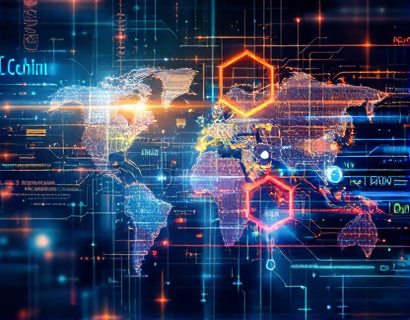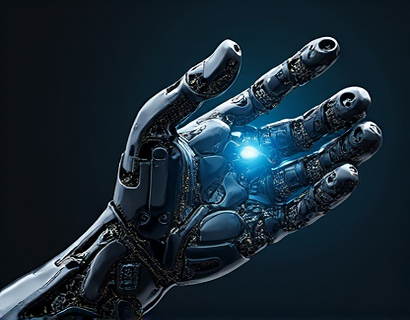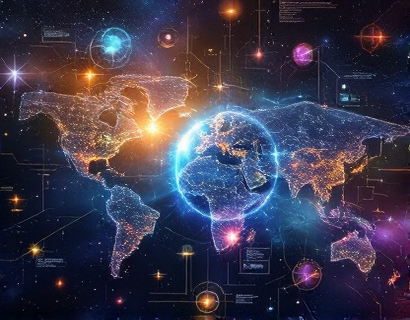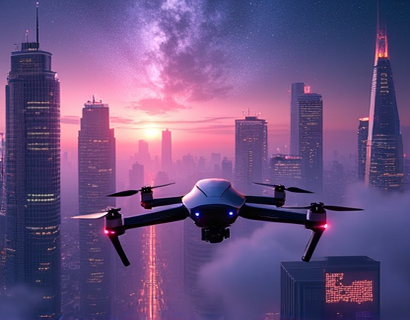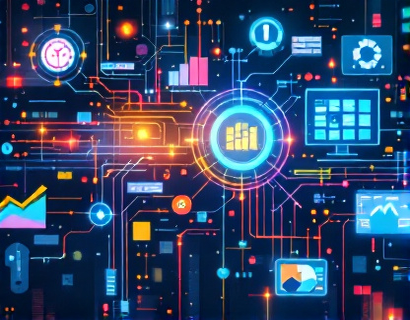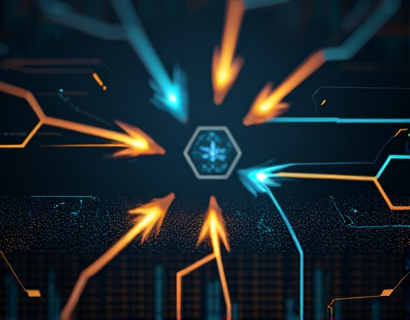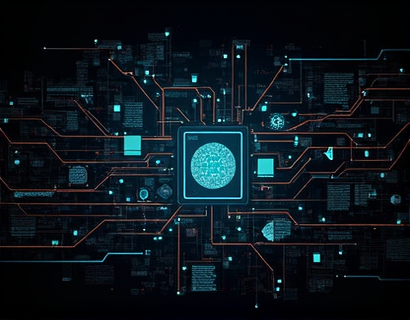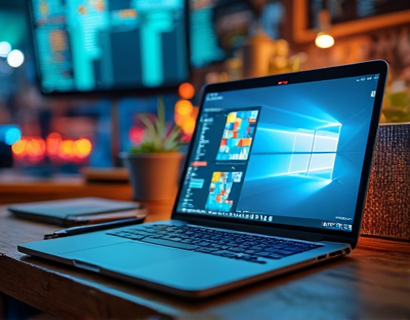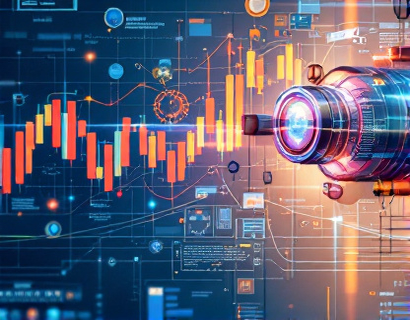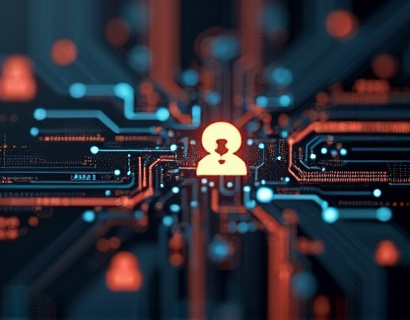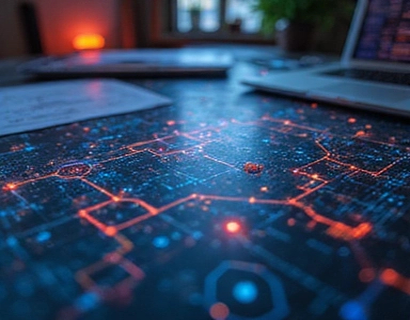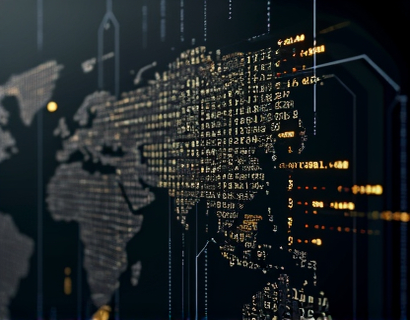Unlocking Digital Potential: Harnessing AI and Crypto for Enhanced User Experiences in the Ucosystem
The digital landscape is undergoing a profound transformation, driven by the convergence of artificial intelligence (AI) and cryptocurrency. This fusion is not just a technological trend but a revolutionary shift that is redefining user experiences across various platforms. For tech enthusiasts and digital innovators, understanding the synergy between AI and crypto is crucial to staying ahead in the rapidly evolving tech world. This article delves into the transformative impact of these advanced technologies, exploring how their integration is paving the way for more seamless, interactive, and innovative online solutions.
The Intersection of AI and Cryptocurrency
At the core of this revolution is the intersection of AI and cryptocurrency. AI, with its capabilities in data analysis, pattern recognition, and predictive modeling, is enhancing the functionality and security of blockchain-based systems. Cryptocurrency, on the other hand, provides a decentralized and transparent medium for transactions, which AI can optimize and secure. This synergy creates a powerful toolset for developing advanced digital solutions.
Enhanced Security through AI and Crypto
One of the most significant benefits of combining AI and cryptocurrency is the enhancement of security measures. Traditional security protocols can be vulnerable to sophisticated cyber attacks, but AI can detect and mitigate threats in real-time. Blockchain's inherent security features, such as immutability and decentralization, are further strengthened by AI-driven analytics. For instance, AI can monitor blockchain transactions for unusual patterns that might indicate fraudulent activity, ensuring a higher level of security for users.
Smart contracts, self-executing contracts with the terms directly written into code, benefit immensely from AI integration. AI can automate the verification and execution of smart contracts, reducing the risk of human error and increasing efficiency. This not only enhances the reliability of transactions but also builds trust among users, a critical factor in the adoption of blockchain technology.
Personalized User Experiences
AI's strength lies in its ability to personalize user experiences. By analyzing vast amounts of user data, AI algorithms can predict preferences, behaviors, and needs, tailoring content and services to individual users. In the context of cryptocurrency and the Ucosystem, this means creating highly customized financial tools and applications. For example, AI can analyze a user's transaction history and financial goals to recommend optimal investment strategies or budgeting plans.
Crypto platforms can leverage AI to offer personalized wallet management, alerting users to potential security risks and suggesting best practices. This level of personalization not only improves user satisfaction but also increases engagement and loyalty. Users are more likely to interact with platforms that understand and cater to their specific needs, leading to a more robust and active community.
Decentralized Finance (DeFi) and AI
Decentralized Finance (DeFi) is a prime example of how AI and cryptocurrency are reshaping the financial landscape. DeFi platforms use blockchain technology to provide traditional financial services without intermediaries, offering greater transparency and accessibility. AI enhances DeFi by optimizing trading strategies, risk management, and portfolio diversification.
AI-driven bots can execute complex trading strategies based on real-time market data, executing trades at optimal times to maximize returns. These bots can also monitor multiple DeFi protocols simultaneously, identifying the best opportunities for yield farming and liquidity provision. For users, this means access to sophisticated financial tools that were previously only available to institutional investors.
Moreover, AI can help in identifying and mitigating risks in DeFi protocols. By analyzing historical data and current market conditions, AI can predict potential vulnerabilities and suggest measures to strengthen the system. This proactive approach to risk management is crucial for the sustainability and growth of DeFi platforms.
Interoperability and Cross-Chain Solutions
Another area where AI and cryptocurrency are making significant strides is in interoperability and cross-chain solutions. The current blockchain ecosystem is fragmented, with different platforms operating in silos. AI can bridge these gaps by developing smart algorithms that facilitate seamless communication and data exchange between different blockchain networks.
Cross-chain solutions enable users to transfer assets and data across various blockchains, enhancing the fluidity and utility of cryptocurrencies. AI can optimize these processes, ensuring efficient and secure transactions. For instance, AI can dynamically adjust routing protocols based on network conditions, transaction fees, and security risks, providing users with the best possible experience.
This interoperability is essential for the Ucosystem, where users expect a cohesive and integrated digital environment. By leveraging AI to create cross-chain solutions, platforms can offer a more unified and user-friendly experience, encouraging broader adoption and usage.
User-Centric Design and AI-Powered UX
User experience (UX) is a critical factor in the success of any digital platform. AI plays a pivotal role in creating user-centric designs that are intuitive, accessible, and engaging. For crypto and Ucosystem applications, AI can analyze user interactions and feedback to continuously improve the interface and functionality.
AI-powered chatbots and virtual assistants can provide instant support and guidance, helping users navigate complex financial tools and services. These AI assistants can understand natural language queries, offering personalized assistance and answers to common questions. This not only enhances the user experience but also reduces the workload on human support teams.
Moreover, AI can conduct A/B testing and usability studies to identify the most effective design elements. By analyzing user behavior and preferences, AI can recommend design changes that lead to higher user satisfaction and retention. This data-driven approach to UX design ensures that platforms remain relevant and competitive in a rapidly changing tech landscape.
The Role of Cryptocurrency in AI Development
While AI is transforming the crypto space, cryptocurrency itself plays a vital role in funding and incentivizing AI research and development. Blockchain-based funding models, such as Initial Coin Offerings (ICOs) and Token Generation Events (TGEs), provide a new way to raise capital for AI projects. These models offer transparency and community involvement, allowing developers to gauge interest and support from potential users.
Cryptocurrency also enables the creation of tokenized rewards for contributors to AI projects, such as data providers, model trainers, and bug hunters. This token-based incentive system aligns the interests of the community with the success of the project, fostering a collaborative and innovative ecosystem. For developers, this means access to a global pool of talent and resources, accelerating the development of cutting-edge AI solutions.
Challenges and Considerations
Despite the numerous benefits, the integration of AI and cryptocurrency in the Ucosystem is not without challenges. Regulatory uncertainty remains a significant hurdle, as governments worldwide grapple with how to govern these emerging technologies. Compliance with regulations is essential to ensure the legitimacy and sustainability of crypto and AI projects.
Another consideration is the environmental impact of blockchain technology, particularly proof-of-work (PoW) consensus mechanisms. The energy consumption associated with PoW mining raises concerns about sustainability. AI can help address this by optimizing energy usage and exploring more eco-friendly consensus algorithms, such as proof-of-stake (PoS).
Privacy is also a critical issue. While AI can enhance security, it can also be used to track and analyze user data in ways that compromise privacy. Implementing robust privacy-preserving techniques, such as zero-knowledge proofs and homomorphic encryption, is essential to maintain user trust and comply with data protection regulations.
Future Prospects
The future of AI and cryptocurrency in the Ucosystem is promising, with numerous potential applications and innovations on the horizon. As technology continues to advance, we can expect even more sophisticated integrations that further enhance user experiences.
One exciting area is the development of AI-powered decentralized autonomous organizations (DAOs). DAOs combine the transparency and autonomy of blockchain with the decision-making capabilities of AI, creating self-governing entities that can operate with minimal human intervention. These DAOs can manage everything from community projects to complex financial systems, offering a new paradigm for decentralized governance.
Another frontier is the integration of AI with the Internet of Things (IoT) within the Ucosystem. AI can process and analyze the vast amounts of data generated by IoT devices, providing insights and automating tasks. This synergy can lead to smarter homes, cities, and industries, where devices work together seamlessly to improve efficiency and convenience.
In conclusion, the fusion of AI and cryptocurrency is revolutionizing the digital landscape, offering unprecedented opportunities for enhanced user experiences. For tech enthusiasts and digital innovators, embracing these technologies is essential to stay ahead in the rapidly evolving world of technology. By understanding and leveraging the synergy between AI and crypto, we can unlock the next level of digital engagement and innovation.



